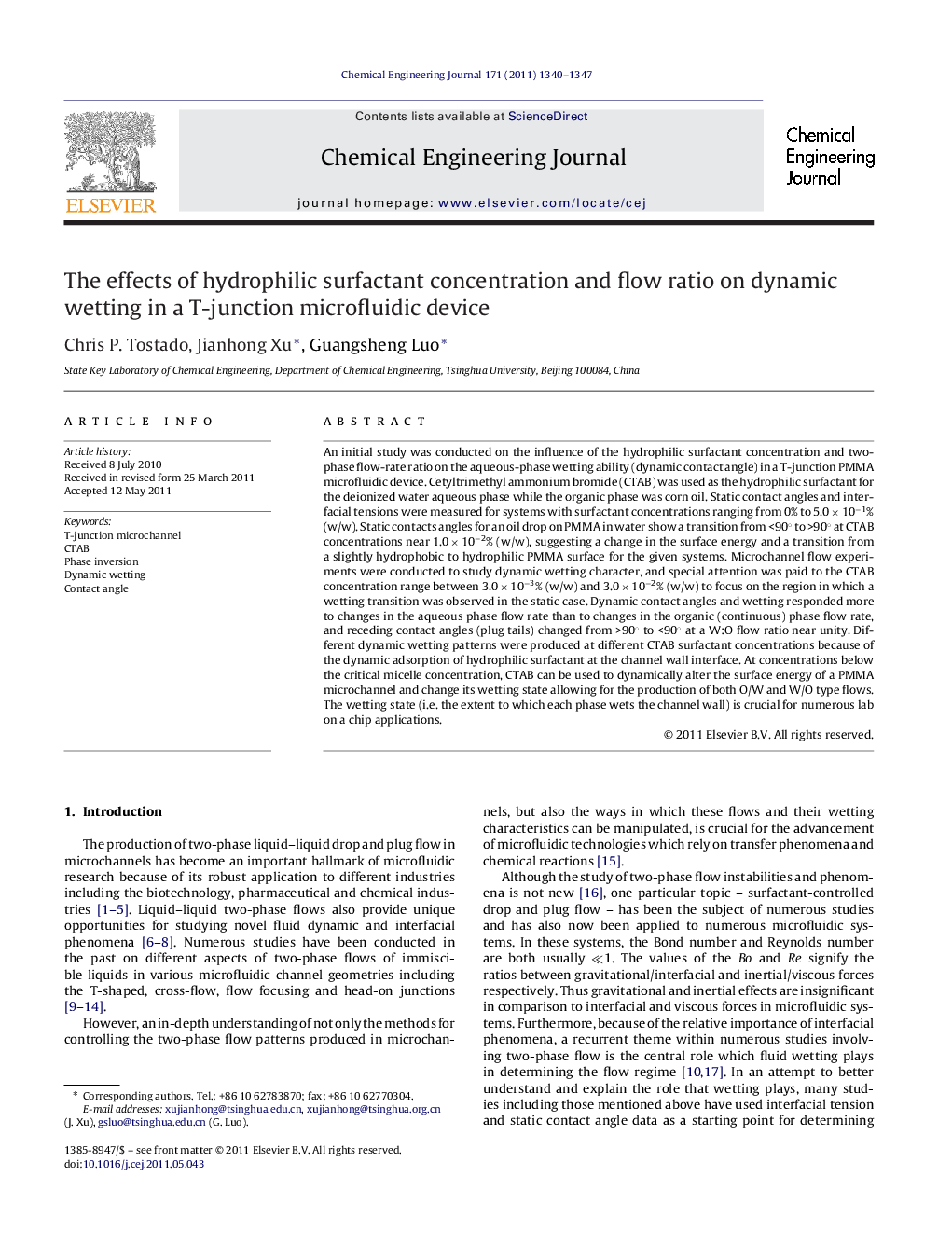| کد مقاله | کد نشریه | سال انتشار | مقاله انگلیسی | نسخه تمام متن |
|---|---|---|---|---|
| 150932 | 456459 | 2011 | 8 صفحه PDF | دانلود رایگان |

An initial study was conducted on the influence of the hydrophilic surfactant concentration and two-phase flow-rate ratio on the aqueous-phase wetting ability (dynamic contact angle) in a T-junction PMMA microfluidic device. Cetyltrimethyl ammonium bromide (CTAB) was used as the hydrophilic surfactant for the deionized water aqueous phase while the organic phase was corn oil. Static contact angles and interfacial tensions were measured for systems with surfactant concentrations ranging from 0% to 5.0 × 10−1% (w/w). Static contacts angles for an oil drop on PMMA in water show a transition from <90° to >90° at CTAB concentrations near 1.0 × 10−2% (w/w), suggesting a change in the surface energy and a transition from a slightly hydrophobic to hydrophilic PMMA surface for the given systems. Microchannel flow experiments were conducted to study dynamic wetting character, and special attention was paid to the CTAB concentration range between 3.0 × 10−3% (w/w) and 3.0 × 10−2% (w/w) to focus on the region in which a wetting transition was observed in the static case. Dynamic contact angles and wetting responded more to changes in the aqueous phase flow rate than to changes in the organic (continuous) phase flow rate, and receding contact angles (plug tails) changed from >90° to <90° at a W:O flow ratio near unity. Different dynamic wetting patterns were produced at different CTAB surfactant concentrations because of the dynamic adsorption of hydrophilic surfactant at the channel wall interface. At concentrations below the critical micelle concentration, CTAB can be used to dynamically alter the surface energy of a PMMA microchannel and change its wetting state allowing for the production of both O/W and W/O type flows. The wetting state (i.e. the extent to which each phase wets the channel wall) is crucial for numerous lab on a chip applications.
► The contact angle of an oil drop on a PMMA surface in water ranges depending on the CTAB surfactant concentration.
► The PMMA surface transitions from being oleophilic (<<90°) to oleophobic near a CTAB concentration of 1.0 × 10−2% w/w.
► Microchannel flows showed different wetting patterns at different surfactant concentrations due to CTAB adsorption.
► CTAB alters the surface energy of PMMA, changing the wetting state and allowing for the production of O/W and W/O flows.
► CTAB alone (no binding) cannot lower the water surface tension and interfacial tension enough to induce a phase inversion.
Journal: Chemical Engineering Journal - Volume 171, Issue 3, 15 July 2011, Pages 1340–1347